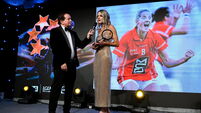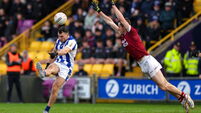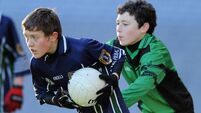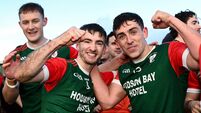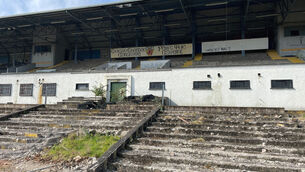Paul Rouse: GPA deliver mixed messages for players navigating social media minefield
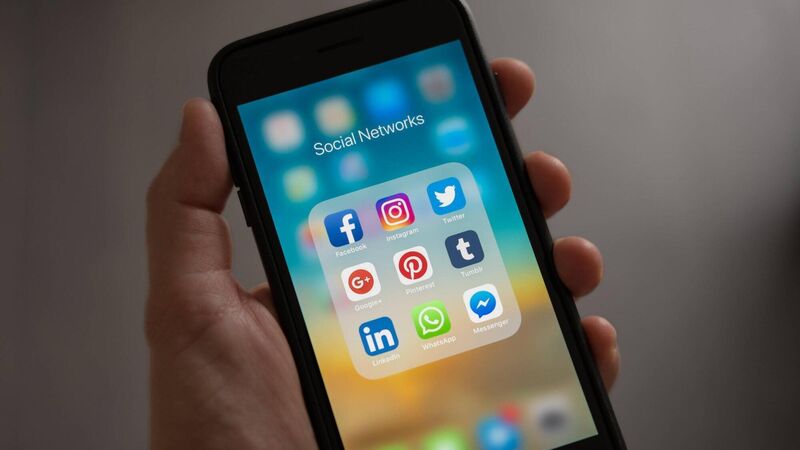
There was a section of the GPA training to players which seems clearly to sit at odds with that sensible advice that inter-county stars should limit their time on social media
The reach of the internet is transforming our world in so many different ways. From shopping to social life, and from gaming to celebrity culture, there is nothing that has not felt the insistent press of its influence.
This is having a profound impact on human behaviours. Take, for instance, the growth of social media. There is no news in this growth; indeed, it is now something that is utterly commonplace. And it is a self-evident truth that it has changed how people live with each other.
The sheer scale of the reach of social media grows by the day and is stunning. A report produced in Vancouver last year by two media companies ‘Hootsuite’ and ‘We Are Social’, entitled ‘Digital 2020’, laid bare in raw numbers digital trends and popular engagement with social media.
This report showed how more than 4.5 billion people are now online – with almost 300 million new internet users joining in 2019 alone. The report also showed how almost half of the world’s population (close to 4 billion people) now use social media. This was an increase of 9% (amounting to more than 321 million people) from the previous year The basic point is that those who remain offline – “The Unconnected” – are now a minority, and their numbers are growing fewer every day.
More than that, the average internet user around the world will spend more than 100 days of the year online, if you count up all the hours that they clock up. More than one-third of that time is spent on social media – some 2 hours and 30 minutes per day.
It is in this context that the Gaelic Players Association organised that a media company should provide recommendations for how inter-county players should use social media, as part of media training. There is much in these recommendations that is sensible. Indeed, it is the kind of advice that is now provided to children in primary and secondary school.
Care
As John Fogarty reported earlier this week, at its core is the idea that you need to take care of yourself online. Most obviously, the players were advised that they should monitor how much time they spend on social media, that they should not look to social media for reassurance and self-worth, that an unhealthy dependence on social media created real psychological conditions, and that vile abuse should be reported and never tolerated.
There was advice to remain in control in public, to be particularly careful of the use of cameras and to think of what future employers might make of either players’ posting behaviour or the material posted about them.
The question was asked: “Will what they find help or hinder your future job prospects?”
In particular, there was advice that no player should post anything that “can be interpreted as sexist, racist or homophobic.”
More than that, players were advised to make sure that friends and family posting video material on line about them could end up creating a world of trouble.
Ultimately, players were reminded that the expert advice was that nobody should spend more than 30 minutes a day on social media.
At odds with sensible advice
However, there was another section of the training which seems clearly to sit at odds with that sensible advice that players should limit their time on social media and that they shouldn’t chase likes.
This section followed a question which asked: “Are you building a brand on social media?”
This question was followed by advice: “Start by defining your brand – What kind of athlete are you? What aspects of your athletic story are central to your identity? What other aspects of your identity do you want to share with the world?”
It also advised: “Design a strategy for enacting this brand - What posting behaviour will help you to directly and indirectly establish and communicate your brand on social media?”
And: “Start engaging with your audience – Get your brand out there! Post regularly and consistently, connect to master brands that are part of your story, and post with images and rich content to grab attention.”
Players should also go online and “connect to master brands”.
There are other advices as well, but the point is that there is an obvious contradiction between being told to stay offline and not chase likes, and at the same time offer advice on how to build a brand which essentially means that you should spend time on line, should try and attract followers, should share parts of your identity as part of this process.
This begs other questions: What does ‘build a brand’ mean? More to the point, what are you building a brand for?
What is its purpose? Basically, why?
It is not clear if these questions were addressed in the training. As it is, the advice on how to build a brand is interesting. There is the suggestion that players should post information and imagery that would “grab attention.” But how exactly do you do that?
For example, what supporters of teams and people interested in games are often greatly interested in is what happens behind the dressing room door? But – and we know this from the slew of boring autobiographies that are published by players in every sport after they retire – this is pretty much the last thing that players are willing to do.
They know the consequences of revealing too much can pollute the atmosphere in the dressing room.
It is an approach that means that when they are presented at corporate events and for championship launches, they say next to nothing that moves beyond the banal. Perhaps it is to do with the whole corporate garb that surrounds GAA events now. For such events, players get thrown some money and the wheel turns again.
It is regrettable that very often, this centralisation of message reduces GAA media events to cliché after cliché. Maybe that is the point of media training?
Either way, across all forms of media, there has surely never been as much comment available. But what is lacking is genuine substance, human interest stories that carry authenticity.
But authenticity is not easy to manufacture through the media, if it can be put like that. How will being active on social media, ‘building a brand’ in the manner suggested change that?
The thing is that there are many interesting men and women playing inter-county Gaelic football and hurling. Meeting them is often a pleasure: They are articulate, have things to say, are curious and good fun. And they are the opposite of a sterile, manufactured ‘brand’ – a refresher on the challenges of living with social media is no bad thing; the same cannot be said for brand-building.
- Paul Rouse is professor of history at University College Dublin.

